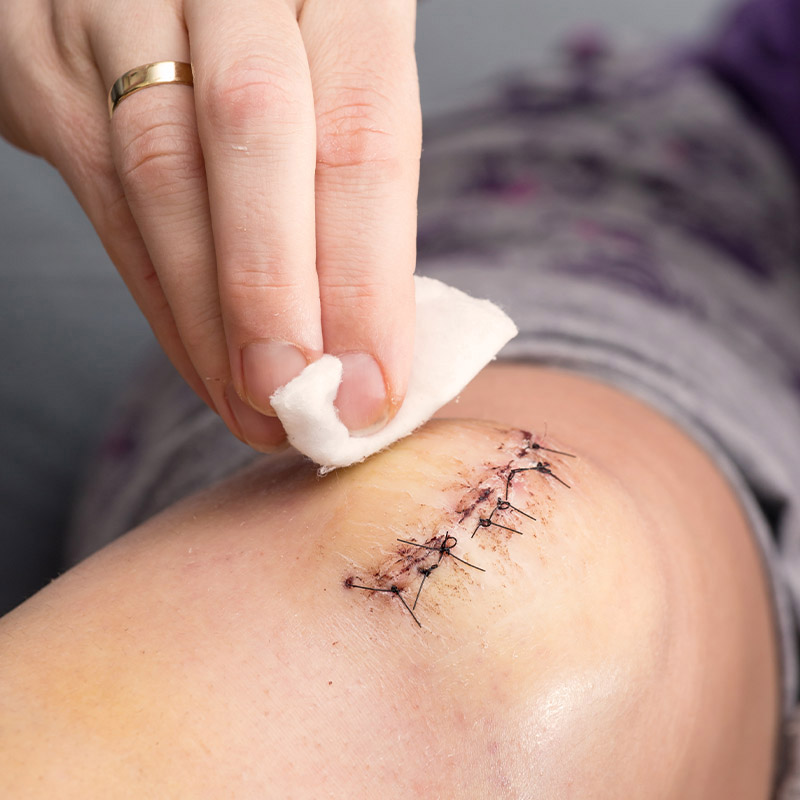
Surgical Dermatology
1 in 5 people will develop skin cancer in the United States. There are three main types of skin cancer: basal cell carcinoma, squamous cell carcinoma, and melanoma. A majority of non-melanoma skin cancers are associated with the ultraviolet radiation from sun rays. Sun protection is therefore the first line of defense against skin cancer.
Schedule a ConsultationThe first step is having a board certified dermatologist take a close look at your skin. Any “skin spots” which have been changing in size, shape, or color should be brought to your doctor's attention. Suspicious lesions are biopsied and a pathologist reads the specimen under a microscope to determine if any cancerous cells are present. A number of treatments are available, including traditional surgery, scraping and burning, freezing, radiation, topical medications, and advanced Mohs micrographic surgery.
Mohs micrographic surgery is an advanced treatment for certain types of skin cancer. This revolutionary treatment offers the highest potential for a cure, while also minimizing the cosmetic impact of treatment. Mohs Surgery is named after Dr. Frederic Mohs, a surgeon who developed the technique in the late 1930s. Skin cancers are removed one layer at a time in a specific way. After each specimen is removed, it is frozen on-site by a licensed histotechnician and subsequently examined by the Mohs surgeon under a microscope to determine whether cancer remains in the skin. If the cancer is present at the margin, the Mohs surgeon is able to precisely map and remove it, sparing healthy tissue. Mohs surgery allows only the diseased tissue to be removed, thus sparing as much of the normal skin as possible.
Read MoreMelanoma, the most serious type of skin cancer, develops in the cells (melanocytes) that produce melanin — the pigment that gives your skin its color. The exact cause of all melanomas isn't clear, but exposure to ultraviolet (UV) radiation from sunlight or tanning lamps and beds increases your risk of developing melanoma.
The risk of melanoma seems to be increasing in people under 40, especially women. Knowing the warning signs of skin cancer can help ensure that cancerous changes are detected and treated before the cancer has spread. Melanoma can be treated successfully if it is detected early.
A is for Asymmetry: One half of the mole does not match the other half.
B is for Border irregularity: The edges are ragged, notched, or blurred.
C is for Color that varies from one area to another.
D is for Diameter: While melanomas are usually greater than 6mm (the size of a pencil eraser) when diagnosed, they can be smaller.
E is for Evolving: A mole or skin lesion that looks different from the rest or is changing in size, shape, or color.



